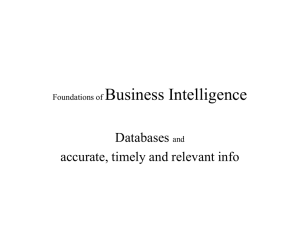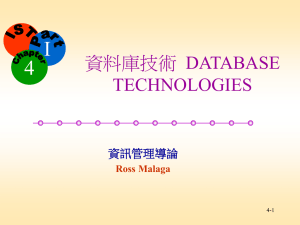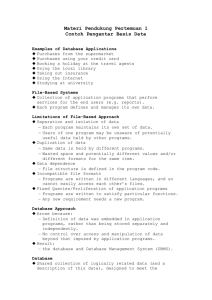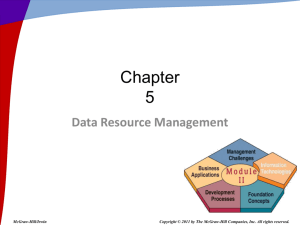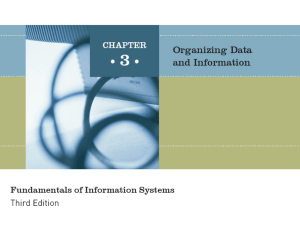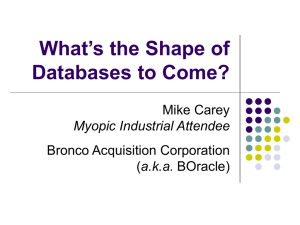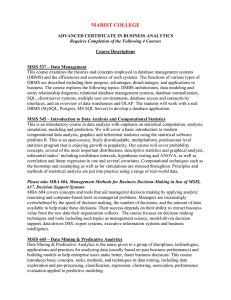Chapter 6
advertisement
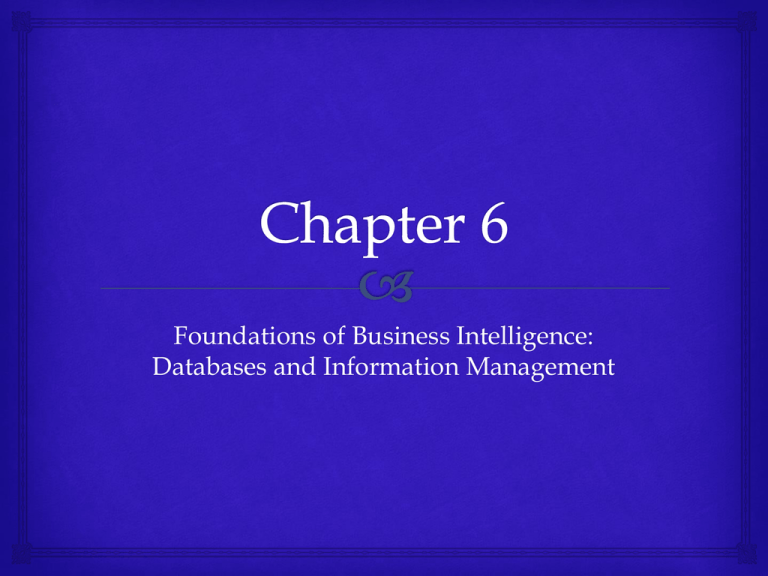
Foundations of Business Intelligence: Databases and Information Management Terms Bits (smallest unit of data a computer can handle) Bytes (8 bits; each represents a single character – letter, number, or symbol) Field (group of words or complete number) Record (group of related fields) File (group of records of same type) Database (group of related files) Entity (person, place, thing, or event about which we store and maintain info) Attribute (characteristic or quality describing an entity) Traditional File Environment Data redundancy and inconsistency Program-data dependence Lack of flexibility Poor security Lack of data sharing and availability Database Management Systems (DBMS) DBMS – Access, Oracle, DB2 examples/software Logical view – data as perceived by end users and data specialists Physical view – where data stored and structured Relational DBMS – represent data as two dimensional tables (called relations) Tuples (rows in a table) Key field Primary Key Foreign key Relational DBMS Select, Join, and Project DBMS Object-Oriented (stores data and procedures as objects) Databases in the Cloud DBMS capabilities Data definition – specify structure Data dictionary – stores definitions of data Query and reporting tools, including SQL Database Design Normalization (smallest form of data structures) Database Design (cont.) Referential integrity (rules; consistency in relationships between tables) Entity Relationship (ER) diagram (show relationships between the entities in your database) Data Warehouses Data Warehouse (stores current and historical data; from multiple sources) Data Mart (subset; separate database for different population) Multidimensional Model Tools for Business Intelligence Online Analytical Processing (OLAP) (supports multidimensional data analysis) Data Mining (discovery driven data analysis) Associations Sequences Classification Clustering Forecasting Predictive analytics (uses data mining techniques; predict future outcomes) Web Mining (patterns from WWW) – example Google Analytics Text Mining (extract elements from unstructured data sets) Database Server Database server (where database resides) Other Information Policy Data administration Data governance Database administrator Data Quality Data quality audit Data cleansing (scrubbing)


